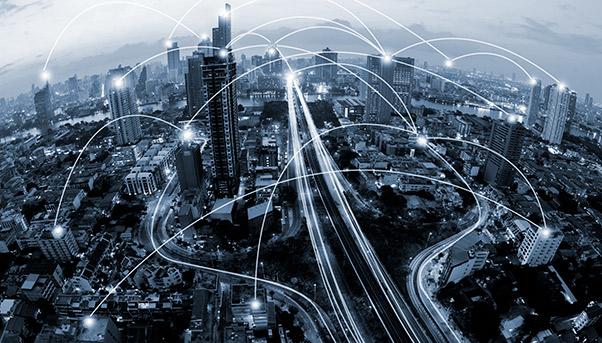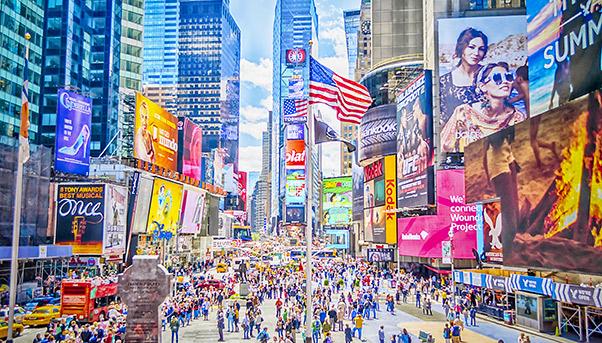
What role does infrastructure play in connectivity?
“Infrastructure is the way in which connectivity is achieved. In fact, we talk about connectivity as if it is some ethereal kind of thing, but it is very physical and concrete.
There are three categories of connectivity: energy, transportation, communications.
There is no connectivity without infrastructure, so we should not be taking it for granted.”
Do you find that most governments take it for granted?
“They simply have not fully assessed the time frame within which reinvestment, regeneration and renewal of infrastructure needs to take place. Throughout history, fixed capital formation has been driven by public investment. So it is not true that governments do not see the value. They just don’t assess the right timeframe within which to make these reinvestments to catalyze the economy. When they do realize it, they realize it too late.”
You say the cost of doing nothing accumulates when a problem is not addressed.
“When you underfinance necessary infrastructure investments, the degradation of the assets continues and so you have significant losses in productivity from congestion, lost wages and productivity, and all the typical measures of suboptimal economic performance that result from insufficient infrastructure. It exacerbates inequality because it extends the gap between the haves and the have-nots.”
Are there some countries that are acting on this?
“Small countries that are wealthy are easy to single out. Singapore has the highest fixed capital formation ratio in the world. They are constantly building. Everything is new.
It’s more interesting to talk about large countries and cities. China, South Korea, Japan – lead the way. Germany also.
Germany and Japan are of particular interest because they are very large countries with enormous fixed capital formation that has been a massive engine of growth. Now you see in both countries infrastructure as a tool of public policy again. Right now in German politics one of the biggest issues that Angela Merkel is facing is that there are complaints from truck drivers and unions and others that the infrastructure is decaying. And if infrastructure is decaying in Germany, just imagine how bad it is in the United States.”
In the United States, which of the three categories is lacking the most?
“Transportation. A lot of people take pride in America having a very robust freight rail network but even that is very inadequate.
It is good relative to passenger rail transport but that doesn’t mean that it is very good so I think that both categories of rail are also behind and highways are as well and the airports, which are in a horrific state.”
Are there some cities or regions that are nevertheless ahead of things?
“Seattle has used an increase in a new public financing kind of strategy to invest in better roads and building affordable housing. They have done a lot of things to make the city more attractive to young people and to drive up entrepreneurialism.
They are also looking at what is called the Cascadia Corridor, a transportation network from Vancouver to Seattle and then south all the way through Oregon to California. So the state of Washington stands out as a very progressive example.”
Is there a tipping point where U.S. cities or states realize they have to do something, like a bridge collapsing?
“It used to be very different. There is the Pacific Railroad, the Interstate Highway System, the Tennessee Valley Authority and other good examples over a 200-year period of the United States doing continental-scale planning. None of this is happening today.”

If we switch continents, people talk of Africa as the next big thing after Asia.
“I am a believer in sub-regional integration in Africa. So I am a believer in an East African community – Ethiopia, Kenya, Uganda Rwanda, Tanzania. There are efforts to do a gas pipeline from Uganda to the coast, a multimodal rail corridor that is going to expand trade into the interior, as well as an East African electricity grid and joint investment promotion activity.
You have a catchment area of between 220-250 million people. That is promising.”
And Asia?
“What you have in Asia is Chinese-led internal infrastructure investment, and then you have the external projects both bilaterally as well as through the AIIB (Asian Infrastructure Investment Bank) – the new Silk Road, or as it is called in China: One Belt, One Road. All of these are really going to take off.
You have the pipelines to the Caspian Sea. You have the railway that goes through Uzbekistan and Turkmenistan to Iran. There are a lot of projects and the AIIB will only be a fraction of those projects because most of it is bilateral.
With the China-Pakistan Economic Corridor (CPEC), the AIIB investments will be just a fraction of the total. The gas pipeline arrangements with Russia – these are also bilateral. If you add up the bilateral as well as the multilateral as well as the AIIB, there is a huge amount of going on in Asia that is helping tie the countries together.”
Is there more involvement by private investors?
“In Southeast Asia, with Indonesia, the Philippines and India in particular, you have a whole new set of efforts to use capital markets to raise money through bonds for infrastructure.
These countries are Asia’s three largest democracies by population and all of their political platforms and debates have been about infrastructure in the past five years, so they know they have a lot of promises to keep. And they know that without attracting foreign investment, the capital just won’t be there because there isn’t sufficient room to manoeuver fiscally. So you see a lot of talk about the public-private partnership sorts of models.”
Is instability in some regions an obstacle to development?
“Even in unstable countries like Pakistan you can see where the Pakistani military is reallocating its military assets to protect the corridor so it is protecting infrastructure more than it is protecting borders.
Supply chains and infrastructure are becoming the more lucrative assets on the map than borders, and Pakistan is a perfect example of it.”

Europe isn’t investing like other regions even though there is the Juncker Plan
“Europe is still governed by austerity thinking. But the obvious problem is that austerity is not going to generate growth. And therefore it is not going to reduce the debt.
I would have more faith in the Eurozone market because it is self-financing and you should see a lot more of the Juncker Plan and so on. But because you are not acting as a fiscal union there is a lot of concern about the resilience of specific economies.
By contrast, in America there are no more fiscal hawks. Nobody cares anymore. That conversation is lost. For the United States, everything remains cheap to finance and there is no talk of austerity. That said, they are still under-investing in infrastructure.”
Public transport seems like a proposition that nobody can lose: fewer cars, less congestion, reduced air pollution…
“The problem is two-fold. The first is cultural. In America people just want to have cars and, of course, the way that cities are designed is favorable to automobile transportation.
In the future, European cities will still function because they’re pedestrian-oriented and they are dense. Cities like Atlanta in America don’t have a large population and have a gigantic footprint. It makes no sense.
This leads to the second point, which is the fact that there already is a legacy infrastructure. So why can you not have a high-speed rail between Boston and Washington even though one million people every day get on Amtrak in that area? Because you already have an old rail and nobody wants to stop the old rail to take it apart and build a new one in its place because that would slow things down. And no one wants to build a new one parallel to the old one because there’s no space.
No one wants to deal with the delays or the costs inherent in getting towards a more productive system.”
But you have cases like Copenhagen.
“Again, these are places with a lot of money and very high political will. Small populations and a totally different culture. In London, they have been turning traffic lanes into bicycle lanes. In cities where there is the public will to do this, it can happen. In New York City, for example, they have closed off Times Square to cars at certain times of the week. There are cafes now.
And people adapt.”

